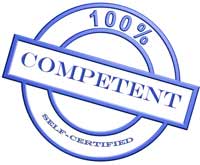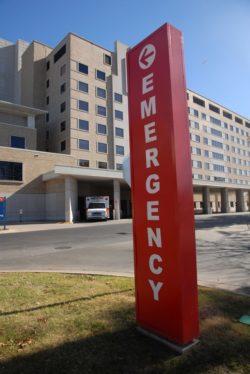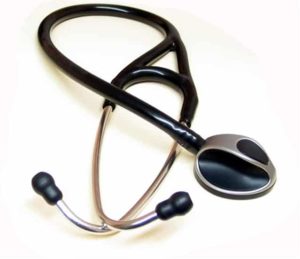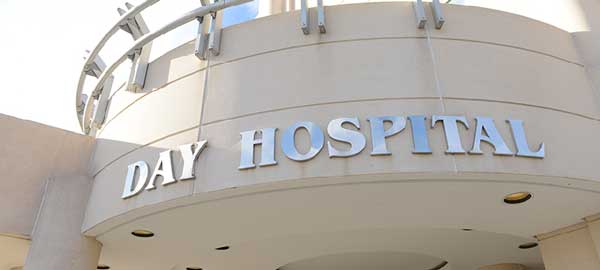Your cart is currently empty!

Recommended eating disorder treatment for adults: the UK’s NICE guidelines
These are the recommended treatments for adults in the UK
If you are in the UK and you're concerned about a family member age 18+, this page is for you. Read this to know what to expect.
In the UK, NICE makes recommendations for the treatment of eating disorders. If you're in England or Wales, NICE is the standard that the NHS has to provide. Northern Ireland follows similar standards and Scotland's equivalent is the SIGN guideline.
If you're getting less, you can complain that standards are not being followed.
This page is about adult treatment. I report on the NICE guidelines for under-18s here. The top recommended treatment is very different.
The NICE guidelines for eating disorders is based on research
Wherever you are in the world, England's NICE guidelines for the recognition and treatment of eating disorders is useful to you because:
- It is the result of a thorough assessment of research findings. Experts have sifted through many studies large and small, graded them for quality, and drawn conclusions. Most of us can't do as individuals.
- But bear in mind that NICE also takes into account the cost and the feasibility of a treatment. For instance, I'll tell you later how the recommendation for 18-year olds is more logistical than scientific.
- Know that there may be other treatments that are worth exploring for your adult child. The treatments on NICE tend to only pay lip service to the support of parents, partners and family members. See my post here on approaches that really do make use of the tremendous help a family member can provide.
Anorexia nervosa: weight gain is key
I'll quote from the NICE guidelines with paragraph numbers so you can find the source. This section on weight gain is much needed!
'When treating anorexia nervosa, be aware that: helping people to reach a healthy body weight or BMI for their age is a key goal and weight gain is key in supporting other psychological, physical and quality of life changes that are needed for improvement or recovery.' (1.3.2)
This is important because therapists used to put psychotherapy and motivational work ahead of weight gain. In the case of adolescents, family-based treatment has shown that weight gain can and must happen first.
Yet I'm worried about the vagueness of 'reach a healthy body weight or BMI for their age'.
It could imply that we pluck a BMI off a chart. Yet each person will have their own individual weight that meets biological needs. Lots more from me here.

It's a worry that some professionals believe that quite a low BMI is good enough, and NICE's vague use of the word 'healthy' may allow this to continue.
I'm looking at results from a study of two approaches for adults with anorexia: MANTRA and SSCM. At the end of 12 months of treatment, the mean BMI was no higher than 18, and less than 3 kg had been gained. This is very worrying. Yet as we'll see later, these are two of the top approaches for adults.
For comparison, in adolescent treatment, we know we can support a youngster to regain weight rapidly, to get them back onto their pre-anorexia weight growth curve (and beyond) and for them to stabilise there.
must address eating and attitudes to weight, and there must be weight gain.
Treating Anorexia in adults (18 and over)

I must warn you, the treatment of adults has even less high-quality research than the treatment of teenagers.
NICE recommends 3 possible routes for the treatment of adults with anorexia.
- Individual eating-disorder-focused cognitive behavioural therapy (CBT-ED)
- Maudsley Anorexia Nervosa Treatment for Adults (MANTRA)
- Specialist Supportive Clinical Management (SSCM)
and if none of those three are acceptable or effective, the next best option is:
- eating-disorder-focused focal psychodynamic therapy (FPT)
I describe CBT-ED here. There's a lot more evidence to support this approach for adults than for adolescents.
Below: manuals and self-help for CBT-ED. CBT-ED covers anorexia, bulimia and binge eating disorder because it considers them to all come from the same issues.
SSCM, as described in one study, 'has two distinct components: clinical management, which involves alleviation of the symptoms of anorexia nervosa, particularly focusing on weight gain via resumption of eating; and a supportive psychotherapeutic approach to issues identified by the patient as important.'
MANTRA (The Maudsley Model of Anorexia Treatment for Adults)comes from the adult eating disorder service of South London and Maudsley NHS Foundation Trust and King’s College London. On the team are Ulrike Schmidt and Janet Treasure (who was on the committee that produced the recommendations). Janet Treasure is also behind an approach she has called 'New Maudsley', which is about giving parents skills to support a person with an eating disorder. (If you are confusing Maudsley with New Maudsley, I help you out here.)
MANTRA involves 'close others' in treatment, more so than the other NICE treatments. While the intention is laudable, it's a bit lip-servicey, compared to, say, how TBT-S treatment (not in the NICE guidelines– yet?) really engages the 'support' people. You might need to brace yourself, as parents I've talked to felt somewhat blamed for doing things wrong.
Parents, apparently, are responsible for one four factors which must be addressed because they maintain the illness: 'a response of close others characterised by high expressed emotion and enabling of and accommodation to the illness'.
High expressed emotion is when we scream, 'Won't you just eat!!!' or when we howl, 'I can't bear it any more!' Enabling is when we drive our child to the gym so that at least she doesn't sprint all the way there and back. Accommodating is when we spend two hours looking for the one-and-only low-calorie yoghurt our child is willing to eat.
Usually, when I read about 'enabling' and 'accommodating', it's a way of criticizing parents for not doing enough. Yet parents are doing what they can, often with insufficient therapeutic support, to keep their child alive. Parents need tools, not labels.
Another aspect of MANTRA that some experience as blaming is the New Maudsley approach skills-training. Or it might teach you things you never thought about. It depends on the trainer. More on New Maudsley from me here.
NICE deprives 18-year olds of the best evidence treatment

There's a really sad anomaly in these 'adult' guidelines. All the best studies on family treatment were done on 12-to-18-year-olds, so if you're 18, the best evidence is you should be offered family therapy, same as if you were 17. But the NICE guidelines define an 18-year old as an adult, and family therapy isn't on the list of adult treatments.
Parents, if you have an 18-year old living with you at home, you may be lucky enough to have an "all-age" eating disorder service, where you could make good use of anorexia-focused family therapy.
Adult treatment' 's weakness: lip service given to including parents and partners
The big difference between the treatment of adults and of young people is that when you turn 18 the people who love you, live with you, and could help you combat eating-disorder behaviours, are either not involved, or just tolerated.
Family therapy becomes all about smoothing out the relationships between family members. Often, parents feel blamed and pushed away. Which is how family therapy was first used for adolescents before it was radically changed.
Yet on this page on adult treatments, you'll see experiences of parents or partners being extremely valuable partners in recovery. And I've spoken to parents of young adults in England who truly have been included, very successfully. So it's possible and I wish more clinicians did this.
Eating disorder treatment should not be chosen according to age, but according to the individual presentation of the person. What support people do they have in their life? How able are they to do it alone? If they need feeding in an eating disorder unit, why not first see if their parents might do it? If they're coming out of a unit, what support will they get from their family, to re-integrate in ordinary life?
I hope that as some trusts have an all-age service for eating disorders (see this interview for instance), they will gain experience in using families in the same wholehearted way whatever the person's age. With a lot more openness and radical thinking, this may eventually contribute to the next NICE guidelines.
More on anorexia
The NICE guidelines give more important recommendations on the care of those suffering from anorexia here. For less technical recommendations aimed at the public, it's here for youngsters and here for adults
Treating bulimia nervosa – adults (18 and over)
The only recommended treatment for bulimia in adults is cognitive-behavioural, either as self-help or in individual therapy.
- The first port of call is 'bulimia-nervosa-focused guided self-help'.
It can be supplemented by 'brief supportive sessions' - Then if the self-help route is 'unacceptable, contraindicated, or ineffective after 4 weeks of treatment', the recommendation is for individual therapy in eating-disorder-focused cognitive behavioural therapy (CBT-ED)
CBT-ED treatment is described in books by Christopher Fairburn and by Glenn Waller, who were both on the NICE committee. I mentioned it above in relation to anorexia. I describe CBT-ED here.
The NICE guidelines for bulimia are here and they're described for the public here.
Treating Binge eating disorder – any age
Given all the websites that promise binge-eaters a quick route to weight loss, it's heartening that the NICE guidelines say that "weight loss is not a therapy target in itself".
Like for bulimia in adults, there is only one overall approach in the recommendations, and that's a cognitive-behavioural approach.
- The first thing to try is the approach as a 'guided self-help programme'.
There may be 'brief supportive sessions' to help the person follow the programme. - If this proves 'unacceptable, contraindicated, or ineffective after 4 weeks', then group CBT-ED is to be offered.
- If the groups are not available or the person declines it, then we're into individual CBT-ED therapy.
The NICE guidelines for binge eating disorder are here and they're described for the public is here.
Treating other specified feeding and eating disorders (OSFED)
There's just this in the NICE guidelines: 'consider using the treatments for the eating disorder it most closely resembles'.
Hurray for self-referral – if it is what I think
In England, for under-18s, the Access and Waiting Time Standard for children and adolescents with an eating disorder brought in a really useful element: they allow people to self-refer direct to the eating disorder service. This offers a neat solution to the problem that GPs may obstruct access if they don't know enough about the illness.
Now the NICE guidelines say (1.1.2): 'Ensure that all people with an eating disorder and their parents or carers (as appropriate) have equal access to treatments (including through self-referral) for eating disorders, regardless of age.'
Does this mean adults are getting the same access as young people? That seems to be the intention, if not what actually happens.
Waiting time for treatment
"People with eating disorders should be assessed and receive treatment at the earliest opportunity". (1.2)"
Too vague!
For children and adolescents, the maximum waiting time for treatment is clearly stated: 1 week for urgent cases, 4 weeks for routine cases. For adults, the 'earliest opportunity' doesn't mean very much.
Then there's this:
'Early treatment is particularly important for those with or at risk of severe emaciation and such patients should be prioritised for treatment'.
When someone with bulimia is at risk of sudden death because frequent purging has affected their electrolytes, and they're also self-harming and suicidal, this isn't going to help them get help fast.
On the other hand the 'or at risk of severe emaciation' could be helpful. If your loved one is losing weight at such a rate that clearly, they will be emaciated within a few weeks, he or she should get 'early treatment' rather than wait to actually become emaciated. The standard ought to go further and recognise that the amount and speed of weight loss are a greater indicator of risk than whether someone looks emaciated or has a low BMI.
I also celebrate the word 'immediately' in:
'If an eating disorder is suspected after an initial assessment, refer immediately to a community-based, age-appropriate eating disorder service for further assessment or treatment'. (1.2.10)
And I like the word 'suspected' too. Too often, GPs have told people to see how things go and come back in a month if they still have trouble with their eating.
How to identify and assess an eating disorder
The NICE guidelines give a helpful list of criteria to assess for an eating disorder (1.2.6). Traditionally, services would assess people only on their weight. There's been a lot of campaigning to get rid of the 'You're not underweight enough to get treatment'. Frankly, it's still happening. But you can fight it, quoting the following:
"Do not use single measures such as BMI or duration of illness to determine whether to offer treatment for an eating disorder." (1.2.8)
Good work!
The criteria include not just 'an unusually low or high BMI or body weight for their age' but also any 'rapid weight loss', and in children 'faltering growth' (1.2.7). Most importantly, there are many more criteria. For instance, professionals also have to note any eating behaviours that are worrying family members.
Most importantly, there are many more criteria. For instance, professionals also have to note any eating behaviours that are worrying family members.
The list is a good one if you are preparing to accompany a loved one to their first consultation in order to get access to treatment.
How expert must the clinicians be?
"Professionals who assess and treat people with an eating disorder should be competent to do this for the age groups they care for." (1.1.14)

I'm interested in the wording 'for the age group they care for'. This could make quite a difference. For instance, I have big concerns when I see the New Maudsley Method used for children and adolescents (the original audience was for carers of chronic adult sufferers). This is because the method requires parents to do no more than 'nudge'. Compare this to family-based treatment which requires parents to take charge and bring their child's weight up fast in spite of resistance.
Competence is hard to define. There is no standard training or qualifications or certifications for treating eating disorders in the UK. What the NICE guidelines do (in 1.1.17) is ask for 'appropriate clinical supervision' and also for professionals to:
- 'use standardised outcome measures, for example the Eating Disorder Examination Questionnaire (EDE-Q)
- monitor their competence (for example by using recordings of sessions, and external audit and scrutiny)
- monitor treatment adherence in people who use their service.'
So as a parent, you could ask about the supervision your child's therapist is getting, you could query why your child hasn't been given the EDE-Q (which is an imperfect but reasonably well validated questionnaire used worldwide) at the start and end of treatment, and you could ask if the service gets audited. I applaud how in England, some Trusts — but not all — are voluntarily auditing each other's eating disorder service.
Should clinicians follow manuals? A mayonnaise analogy
Clinicians must 'base the content, structure and duration of psychological treatments on relevant manuals that focus on eating disorders' (1.1.16)
There are manuals for most eating disorder treatments. I'm familiar with the FBT and the CBT manuals. They outline for clinicians what to do, week by week, and why.
The above section of the NICE guidelines means, I think, that clinicians are not being forced to follow a manual to the letter, but they have to follow the big principles.
A mayonnaise analogy: if you don't often make mayo, you'll want to follow a trusted recipe. If you're experienced, you could alter some elements. Maybe you prefer lemon to vinegar. Maybe you've found a foolproof technique, replacing the hand whisk with a blender.
'Evidence-based practice' is like adapting a recipe. You're taking (1) 'evidence-based treatment' (a trusted recipe) and altering it based on (2) your own experience and on (3) the patient's situation. The so-called 'three-legged stool' of evidence-based practice.

You might think it's obvious that treatment should be adapted to suit the client, but consider this all-to-real example. A professional decides to ignore the bits in a treatment manual that requires a person to be weighed at each session (as in the CBT and FBT manuals). That's because the person finds the weigh-in so upsetting. It might deter them from attending therapy. Plus, it's unpleasant for the therapist. Is that OK? Some say yes, and some say, absolutely not.
There's a growing interest in deviating from manuals when treating an autistic person. Yet plenty of clinicians will stick to a manual for fear of doing harm.
There's also this issue: methods are tested as a block. The whole recipe. Might there be fantastic alternatives to each ingredient? Most methods don't test for lots of possibilities. For example, a method may insist that you 'externalise' the eating disorder (family-based treatment for youngsters certainly does). I think it's a blunt instrument, not suitable for all people at all times. But there are no studies to check out whether results would be better or worse without externalising. So we either play it safe and stick to the manual, or we act on experience and… opinion.
There are also many things for which 'there is no evidence that it is effective'. That could mean that studies have shown a lack of effectiveness, but it could also mean the intervention has just not been sufficiently studied.
For instance, NICE writes: "Do not offer a physical therapy (such as transcranial magnetic stimulation, acupuncture, weight training, yoga or warming therapy) as part of the treatment for eating disorders." Isn't that surprising? So many private clinics offer yoga, and transcranial magnetic stimulation is, I believe, still being tested.
The support of the family is valued… but only for children and young people
The guidelines say (1.1.9): 'If appropriate, encourage family members, carers, teachers, and peers of children and young people to support them during their treatment.' I am frustrated that adults are not included in this. Using family members is a no-brainer for youngsters getting family-focused therapy. On a positive note, this guideline will help youngsters who are getting CBT-ED, which in my experience often holds parents at a distance, disempowers them and seriously underestimates their contribution.
On the other hand, there can be some information provided to the family, whatever the age of the person with the eating disorder (1.1.11): 'If appropriate, provide written information for family members or carers who do not attend assessment or treatment meetings with the person with an eating disorder.'
Also hopeful, as it applies to any age: 'When weighing people with anorexia nervosa, consider sharing the results with them and (if appropriate) their family members or carers.' (1.3.3) I applaud that a parent may get to follow their adult child's weight-gain — or lack of. I also guess that the 'if appropriate' bit will be used by some professionals to continue holding the family at arm's length.
I regularly support parents whose child has had to postpone university to be cared for at home. Their child may argue that they're eating plenty outside of the home and that they're on target with weight gain. Without data, the parents are left guessing what level of support their child needs. We need more than lip service when it comes to carers' involvement. See examples of fruitful interventions here.
Family members can have their own needs assessed
NICE recognises that family members may 'experience severe distress' and requires services to 'Offer family members or carers assessments of their own needs as treatment progresses, including: what impact the eating disorder has on them and their mental health; what support they need' (1.1.10)
Notice that what's on offer is an assessment, not treatment or remedies for your distress. Check out my 'England' page for more on support for carers.
Emergency plans if your loved one is at high risk

Parents, family members and carers, you should be getting 'practical support and emergency plans if the person with the eating disorder is at high medical or psychiatric risk' (1.1.10)
Empathy, compassion and respect for parents
The guidelines say (1.1.6): 'When communicating with people with an eating disorder and their family members or carers (as appropriate): […] be aware that family members or carers may feel guilty and responsible for the eating disorder; […]show empathy, compassion and respect'. I note there is no age-limit on this one. I hope it will help parents of sufferers of all ages, as many have been disempowered by judgemental, dismissive and patronising comments from clinicians in the presence of the son or daughter.
When your child becomes an 'adult' or goes to university
Services must be 'well coordinated' when a young person moves from children's to adult services or when a person lives 'in different places at different times of the year (for example, university students)' (1.1.18).
What about comorbidities?
It's common for someone with an eating disorder to have a co-occurring mental health condition. Can the two issues be treated together, or should one come first? NICE gives guidance on this in 1.8.12.
It also advocates collaboration between teams treating eating disorders and physical comorbidities, such as diabetes (1.8).
And there's got to be communication: 'when more than one service is involved (such as […] when a comorbidity is being treated by a separate service, then professionals have to 'take particular care to ensure services are well coordinated'. (1.1.18)
Conception and pregnancy for women with eating disorders
There's advice to safeguard the wellbeing of the mother and child (1.9)
Physical health

See 1.10 for the health assessments and monitoring required for different eating disorders. I often hear from parents who are beside themselves with worry because the GP or A&E have not done any tests even though their child has been starving and is exercising intensely. NICE spells out what needs to be done, and there's a lot more detail in the excellent Medical Emergencies in eating disorders (MEED) report from the Royal College of Psychiatrists.
Inpatient and day patient treatment

First, note that professionals have to 'take particular care to ensure services are well coordinated when more than one service is involved (such as inpatient and outpatient services)'. (1.1.18)
Such a small sentence, such a big issue. Traditionally there has been a revolving door between inpatient and outpatient care because not enough attention has gone into the transition. The best inpatient care for children and adolescents involve parents to a high degree during the whole of the treatment (the parents are involved in most of the meals), so that parents can competently take over when the young person returns home.
If you reckon someone you love needs inpatient or day patient care, read section 1.11 of the guidelines as it will answer many of your questions.
One bit I find interesting and positive is this: 'Whether or not the person is medically stable, within 1 month of admission review with them, their parents or carers (as appropriate) and the referring team, whether inpatient care should be continued or stepped down to a less intensive setting'. (1.11.12) This is a shift from the practice in some hospitals where the expectation is that treatment takes, say, 6 months.
It's also heartening to read,
'keep the person's family members or carers involved' (1.11.7).
Sadly, 'involved' is a vague word, leaving some family members still in the dark.
If you're in England and you're not getting the treatment recommended by NICE
The NICE guidelines are recommendations for the health service in England and Wales, and they are not mandatory. That could be a good thing or a bad thing.
Clinicians are required to continue using their clinical judgement: "the guideline does not override the responsibility of healthcare professionals to make decisions appropriate to the circumstances of the individual patient, in consultation with the patient and/or their carer or guardian."
If your clinician deviates from NICE, I recommend that before you accept their chosen approach you check out that they have a huge amount of experience and are consulting top experts. Remember the mayonnaise analogy.
Note that as far as I know, a private clinic doesn't have to follow the NICE guidelines.
You really should enquire about a clinician's experience and training, even within the NHS. I'll give you a US example. I was listening to an esteemed eating disorder clinician there, renown for treating adolescents. They knew that family-based treatment exists (FBT) but they hardly knew anything about it, even though it's long been the the top evidence-based treatment for this age group. That means when parents trust this clinician, they may be unaware there's a more effective method they should try first.
Back to England: your health provider has to give you access NICE-concordant treatment if that's your wish: "Local commissioners and/or providers have a responsibility to enable the guideline to be applied when individual health professionals and their patients or service users wish to use it."
And for children and adolescents in England, the NICE guidelines have extra teeth, and that's because England has the “Access and Waiting Time Standard for Children and Young People with an Eating Disorder. Commissioning Guide”, which I explain in plain English here. This Standard has prompted Trusts all over England to change how they treat eating disorders because there are financial penalties for non-compliance.
Related links
* Go to: The NICE guidelines *
* What’s the best eating disorder treatment for children and young people? The NICE guidelines *
* Eating disorders in England (and tips for Wales, Northern Ireland and Scotland) *
* Adults or young adults: treatment for a restrictive eating disorder *
* Young adults with anorexia: FBT-TAY family-based treatment for 17-25 year olds *
Last updated on:






LEAVE A COMMENT (parents, use a nickname)